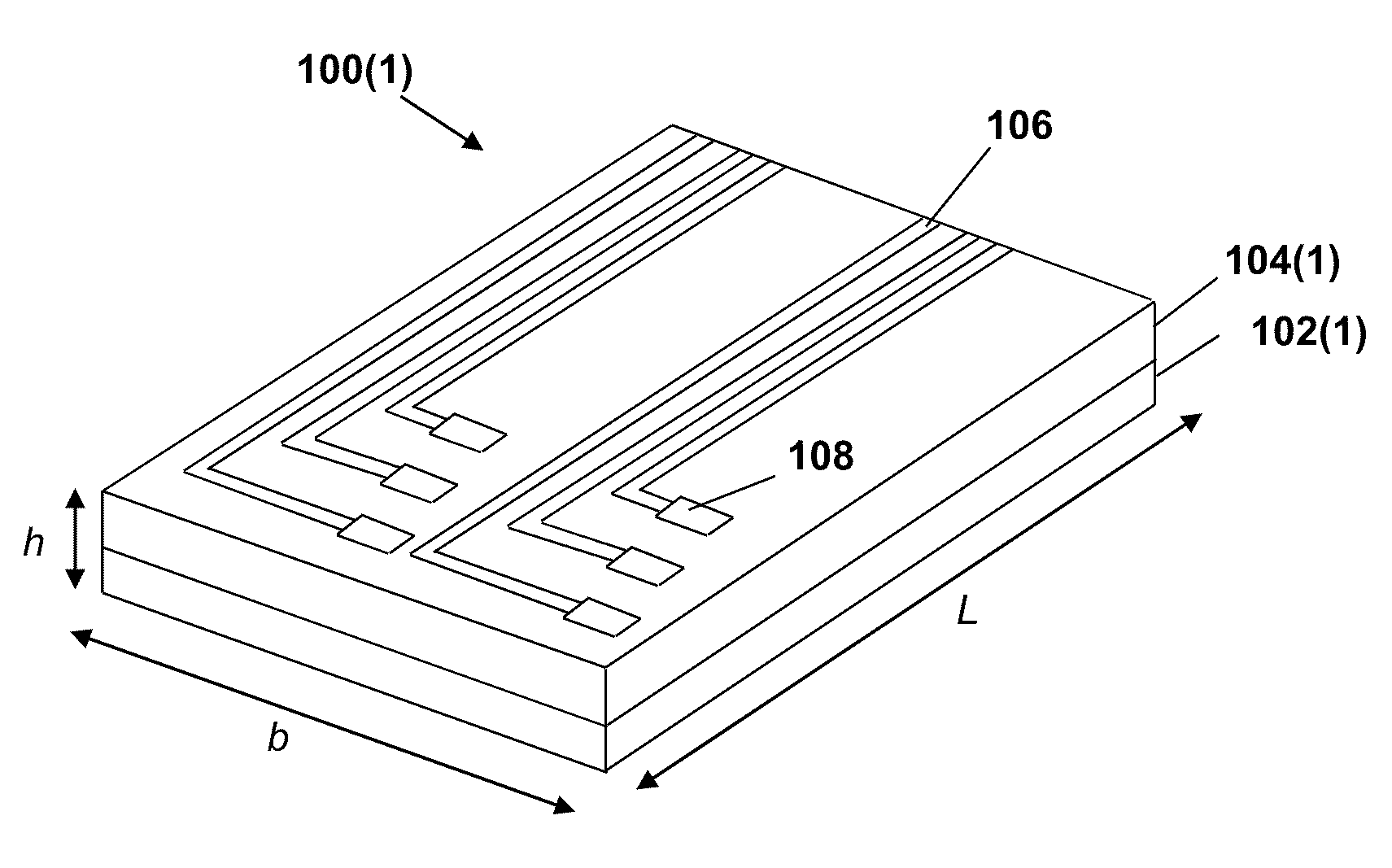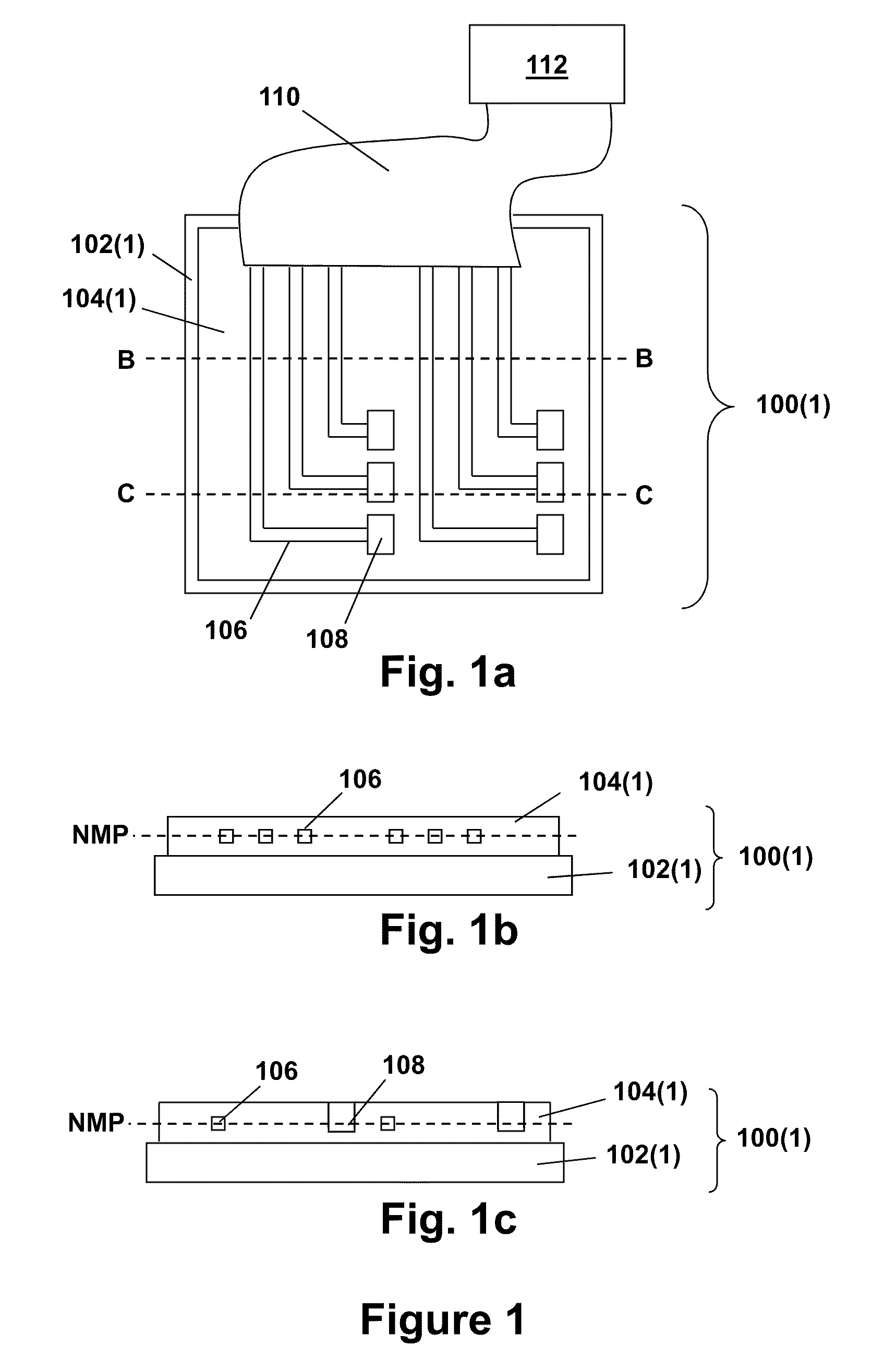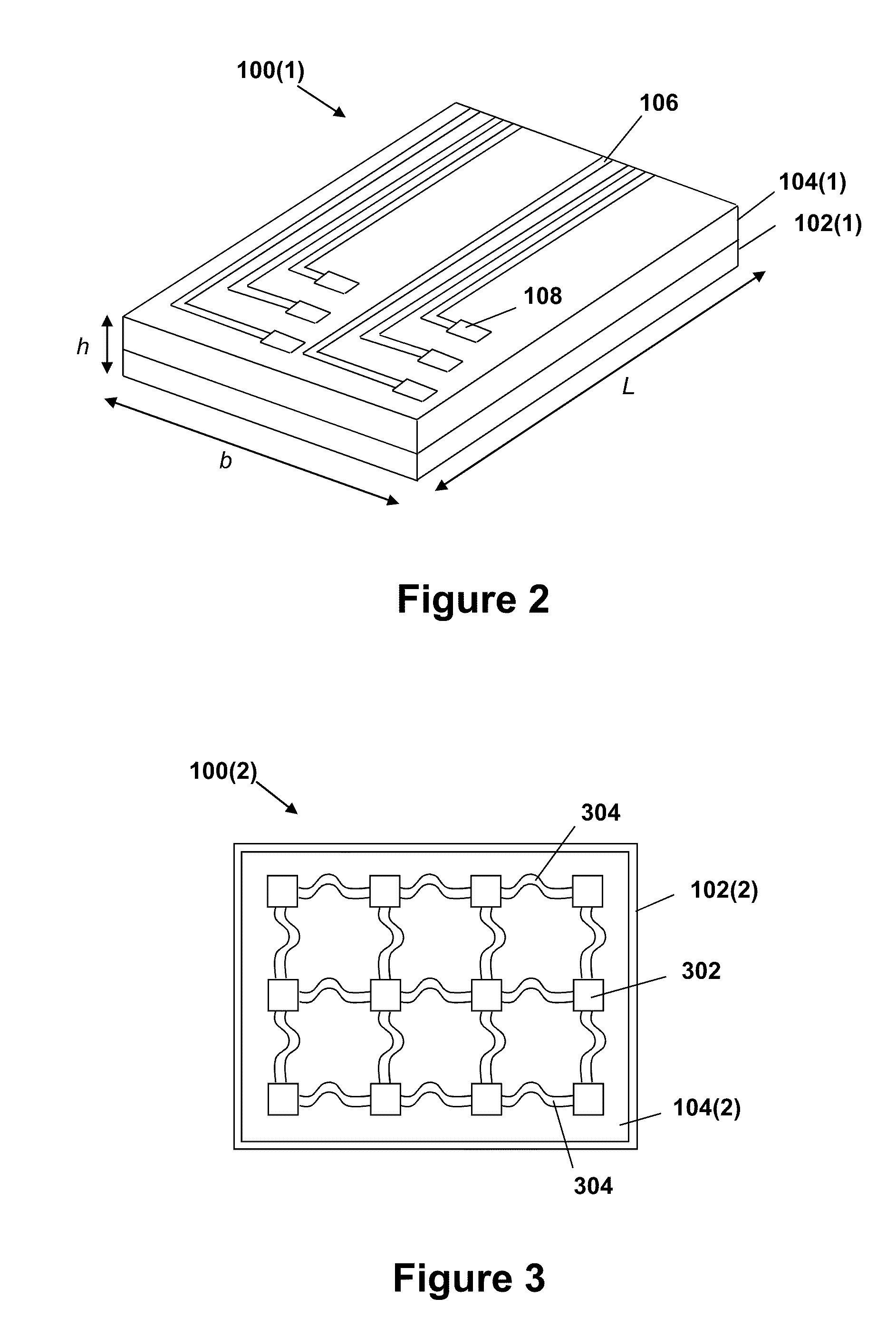Implantable biomedical devices on bioresorbable substrates
a bioresorbable substrate and implantable technology, applied in the field of biomedical devices, can solve the problems of limited long-term tissue health and low fidelity coupling at the biotic/abiotic interface, and achieve the effect of convenient and controllable resorption rates
- Summary
- Abstract
- Description
- Claims
- Application Information
AI Technical Summary
Benefits of technology
Problems solved by technology
Method used
Image
Examples
example 1
Silicon Electronics on Silk as a Path to Bioresorbable, Implantable Devices
[0149]Many existing and envisioned classes of implantable biomedical devices require high performance electronics / sensors. An approach that avoids some of the longer term challenges in biocompatibility involves a construction in which some parts or all of the system resorbs in the body over time. This example describes strategies for integrating single crystalline silicon electronics, where the silicon is in the form of nanomembranes, onto water soluble and biocompatible silk substrates. Electrical, bending, water dissolution and animal toxicity studies suggest that this approach might provide many opportunities for future biomedical devices and clinical applications.
[0150]Advanced implantable bioMedical devices have great potential in clinical applications. Systems that allow insertion into the body to establish conformal contact with the curvilinear surfaces of various organs must be flexible and biocompati...
example 2
Dissolvable Films of Silk Fibroin for Ultrathin, Conformal Bio-Integrated Electronics
[0169]Electronics that are capable of intimate, non-invasive integration with the soft, curvilinear surfaces of biological tissues offer important opportunities for diagnosing and treating disease and for improving brain-machine interfaces. This example describes a material strategy for a type of bio-interfaced system that relies on ultrathin electronics supported by bioresorbable substrates of silk fibroin. Mounting such devices on tissue and then allowing the silk to dissolve and resorb initiates a spontaneous, conformal wrapping process driven by capillary forces at the biotic / abiotic interface. Specialized mesh designs and ultrathin forms for the electronics ensure minimal stresses on the tissue and highly conformal coverage, even for complex curvilinear surfaces. Combined experimental and theoretical studies of the materials and underlying mechanics reveal the key mechanisms. In vivo, neural ma...
PUM
| Property | Measurement | Unit |
|---|---|---|
| thickness | aaaaa | aaaaa |
| Young's modulus | aaaaa | aaaaa |
| Young's modulus | aaaaa | aaaaa |
Abstract
Description
Claims
Application Information
 Login to View More
Login to View More - R&D
- Intellectual Property
- Life Sciences
- Materials
- Tech Scout
- Unparalleled Data Quality
- Higher Quality Content
- 60% Fewer Hallucinations
Browse by: Latest US Patents, China's latest patents, Technical Efficacy Thesaurus, Application Domain, Technology Topic, Popular Technical Reports.
© 2025 PatSnap. All rights reserved.Legal|Privacy policy|Modern Slavery Act Transparency Statement|Sitemap|About US| Contact US: help@patsnap.com



